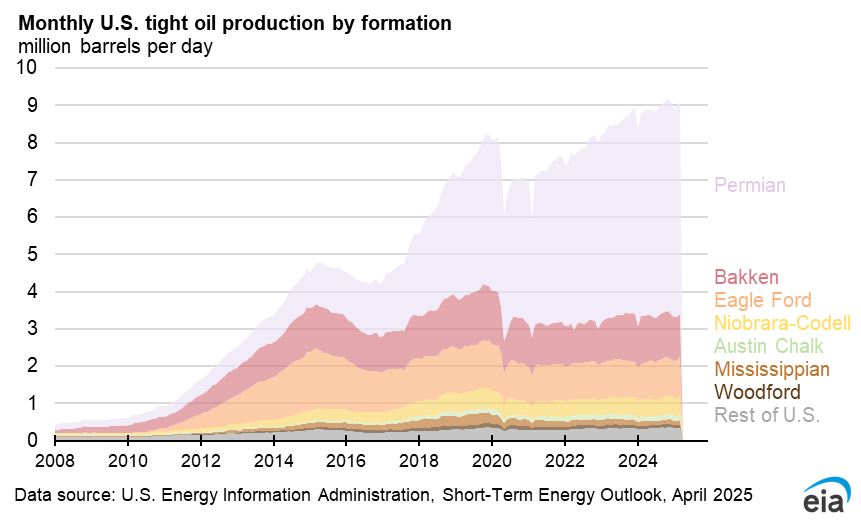How is crude oil found and produced?
The search for crude oil begins with geologists who study the structure and history of rock layers below the earth's surface to locate areas that may contain deposits of oil and natural gas.
Geologists often use seismic surveys on land and in the ocean to find the right places to drill wells. Seismic surveys on land use echoes from a vibration source at the surface of the earth, usually a vibrating pad under a special type of truck. Geologists can also use small amounts of explosives as a vibration source. Seismic surveys conducted in the ocean rely on blasts of sound that create sonic waves to explore the geology beneath the ocean floor.
If a site seems promising, an exploratory well is drilled and tested. If enough oil is found to make it financially worthwhile to pursue, development wells are drilled. The type of well that is drilled depends on the location, geology, and oil resource.
Advances in drilling and production technologies have increased U.S. oil production
In the past, a drilling rig drilled a single vertical well. Now, many directional or horizontal wells can be drilled from one location, or well pad, to access greater areas of oil- and natural gas-bearing rock.
Oil may flow to the earth's surface from natural pressure in the rock formation, or it may have to be forced out of the ground and up through a well. The type of geologic formation where the oil is located determines the technologies used to start the flow of oil and natural gas from the reservoir or resource-bearing rock into the wells.
Hydraulic fracturing is used to access the oil and natural gas contained in tiny pores of rock formations composed of shale, sandstone, and carbonate (limestone). Hydraulic fracturing breaks up the rock in the formations and creates pathways that allow oil and natural gas to escape from the rock layers. Hydraulic fracturing involves forcing water, chemicals, and sand or other proppants (materials used to keep the pathways open) under high pressure into the wells. Steam, water, or carbon dioxide (CO2) can also be injected into a rock layer to help oil flow more easily into production wells.
After the oil has been collected from wells in a production field, pipelines, barges, trains, or trucks transport the oil to refineries or to ports for shipment on oil tankers to other countries.
Conventional and unconventional production
Production of crude oil and natural gas is sometimes called conventional production or unconventional production. Conventional production generally means that crude oil and natural gas flow to and up a well under the natural pressure of the earth. Unconventional production requires techniques and technologies to increase or enable oil and natural gas production beyond what might occur using conventional production techniques. In the United States, most of the new oil and natural gas production activities on land use unconventional production technologies.
Tight oil production
The U.S. oil and natural gas industry uses the term tight oil to mean the different geologic formations producing oil at a specific well. Tight oil is produced from low-permeability sandstones, carbonates (for example, limestone), and shale formations. The U.S. Energy Information Administration (EIA) uses the term tight oil to refer to all resources, reserves, and production associated with low-permeability formations that produce oil, including shale formations.
Notable tight oil formations include
- Bakken and Three Forks formations in the Williston Basin
- Eagle Ford, Austin Chalk, Buda, and Woodbine formations along the Gulf Coast
- Spraberry, Wolfcamp, Bone Spring, Delaware, Glorieta, and Yeso formations in the Permian Basin
- Niobrara formation in the Denver-Julesburg Basin
Page updated October 4, 2023; U.S. tight oil production—selected plays chart updated on June 11, 2024.




